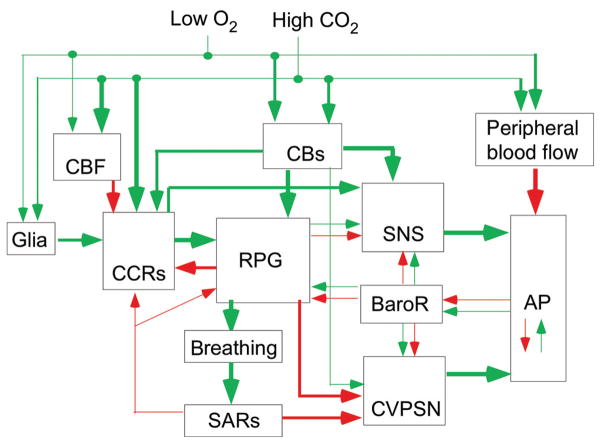Figure 1.
Organigram of the chemoreflexes. Cascade of cardiorespiratory responses elicited in anesthetized mammals by hypoxic stimulation of the carotid bodies or by hypercapnia. These cardiorespiratory responses are elaborated primarily within spinal and pontomedullary circuits. The same circuits are also presumably recruited by small per-turbations of the blood gases in the conscious state to stabilize PCO2. Large acute perturbations of blood gases produce arousal, aversive sensations and stress, responses that involve numerous other brain regions and processes. The direct effects of hypoxia on the CNS are not considered here. Green arrows denote cell activation (e.g., carotid bodies by hypoxia) or a globally excitatory connection (e.g., effect of the carotid bodies, CBs, on the RPG), or an increase in a dependent variable [e.g., effect of CO2 on cerebral blood flow (CBF) resulting in a “washout” of brain CO2]. Red arrows have the opposite meaning. The baroreflex (BaroR) potentiates or attenuates the chemoreflexes depending on the direction of the change in arterial pressure (AP). Slowly adapting lung stretch receptors (SARs) exert a feedback regulation on the RPG and on central chemoreceptors (CCRs) and inhibit the cardiovagal outflow (CVPSN, cardiovagal parasympathetic nerve activity). The chemoreceptors, both central and peripheral, activate the sympathetic nervous system (SNS) both via the RPG and independently of it.

